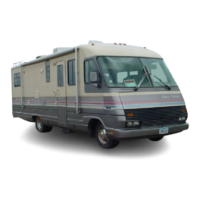Seat belts help to restrain you and your passengers in case
of
a
collision. In most states, the law requires their use.
Seat belts provide the best restraint when:
» the seat back
is
upright
» the occupant
is
sitting upright (not slouching)
» the lap belt is snug
and
low on the hips
» the shoulder belt
is
snug against the chest
» the knees are straight forward
For your safety, your vehicle has combination lap and shoul-
der belts for the driver and front seat passenger and lap belts
without retractors in all other designated seating positions.
Always drive and ride with your seatback upright and the lap
belt snug and low across the hips to reduce the risk
of
serious
injury to the abdomen or neck that could be caused by sliding
under the safety belts in a collision.
Never let a passenger hold a child on his or her lap while the
vehicle is moving. The passenger cannot protect the child
from injury in a collision.
Children should always ride with the seatback in the fully
upright position. When the seatback is not fully upright, there
is a greater risk that the child will slide under the safety belt
and be seriously injured in a collision.
Never use a single belt for more than one person or across
more than one seating position. This greatly increases the risk
that one or both
of
the people will be injured in a collision.
Each designated seating position in your vehicle has a specific
seat belt assembly which is made up
of
one buckle and one
tongue that are designed
to
be used
as
a pair.
SEATS
AND
SEAT BELTS
WARNING
Make
sure that
you
and
your passengers,
includ-
ing pregnant women,
wear safety belts.
Be
sure
that lap belts fit snugly
and as
low
as
possible
around the hips.
If safety
belts
are
not used proper-
ly,
the risk of you
or
your
passengers being injured
in
a collision greatly
increases.
WARNING
Use
the shoulder belt
on
the outside shoulder
only.
Never wear the shoulder
belt under the arm. Never
swing
it around the neck
over the inside shoulder.
Failure
to
follow these pre-
cautions could increase
the risk and/or severity of
injury
in
an
accident.
PACE
ARROW
